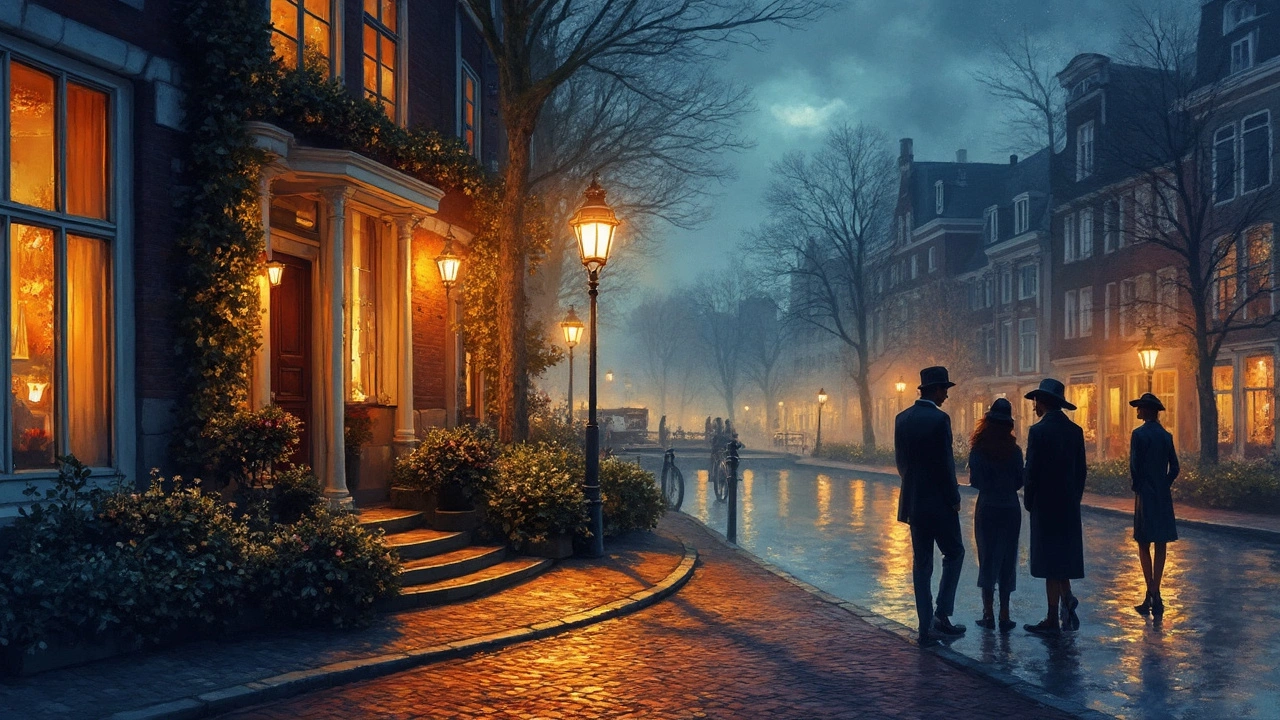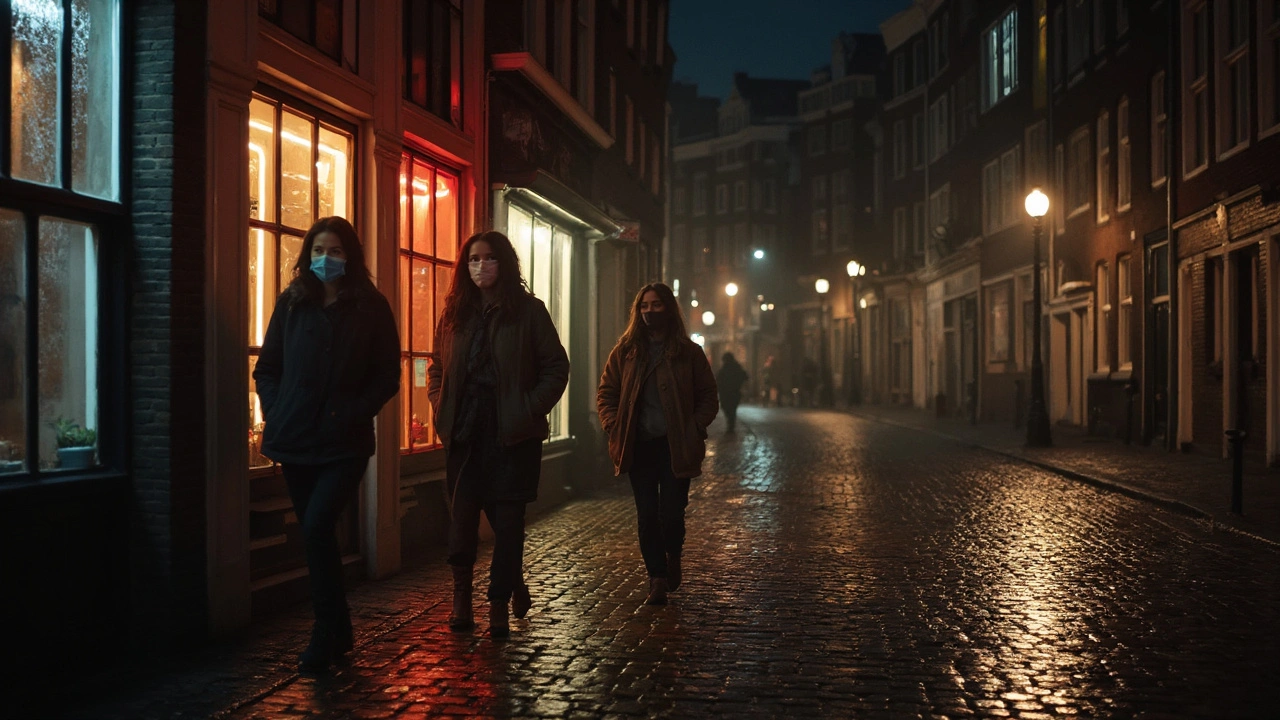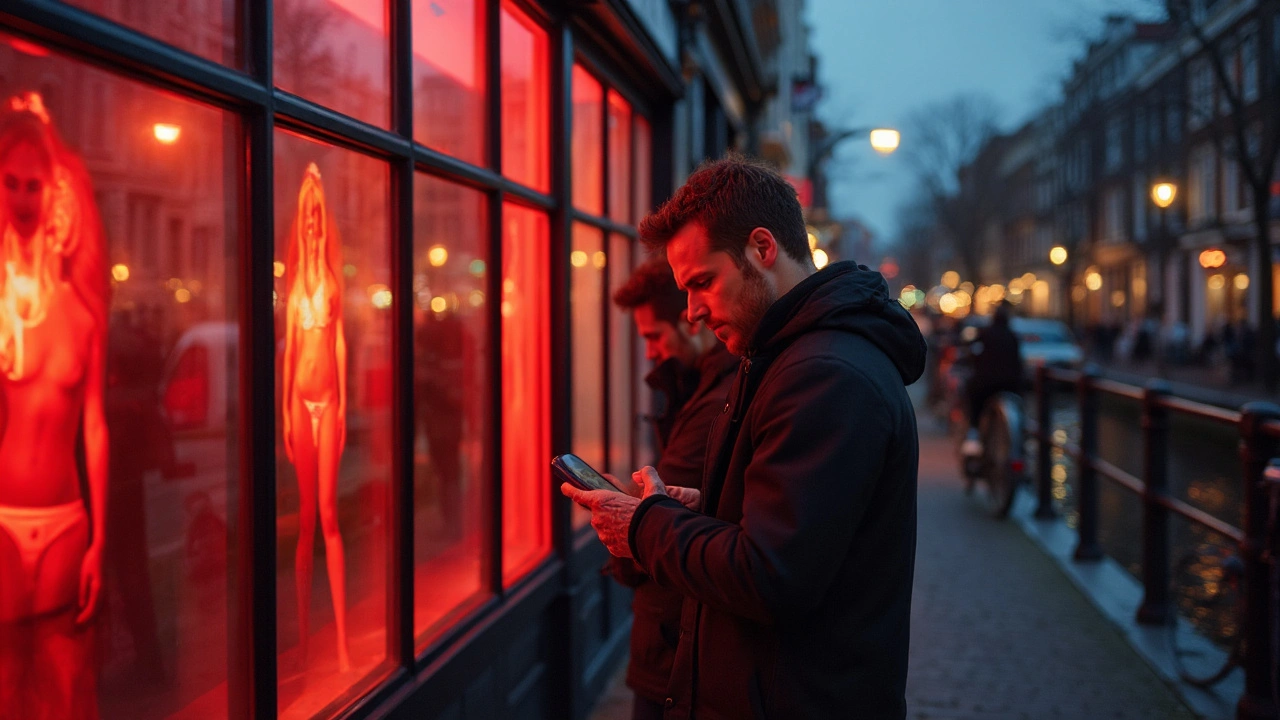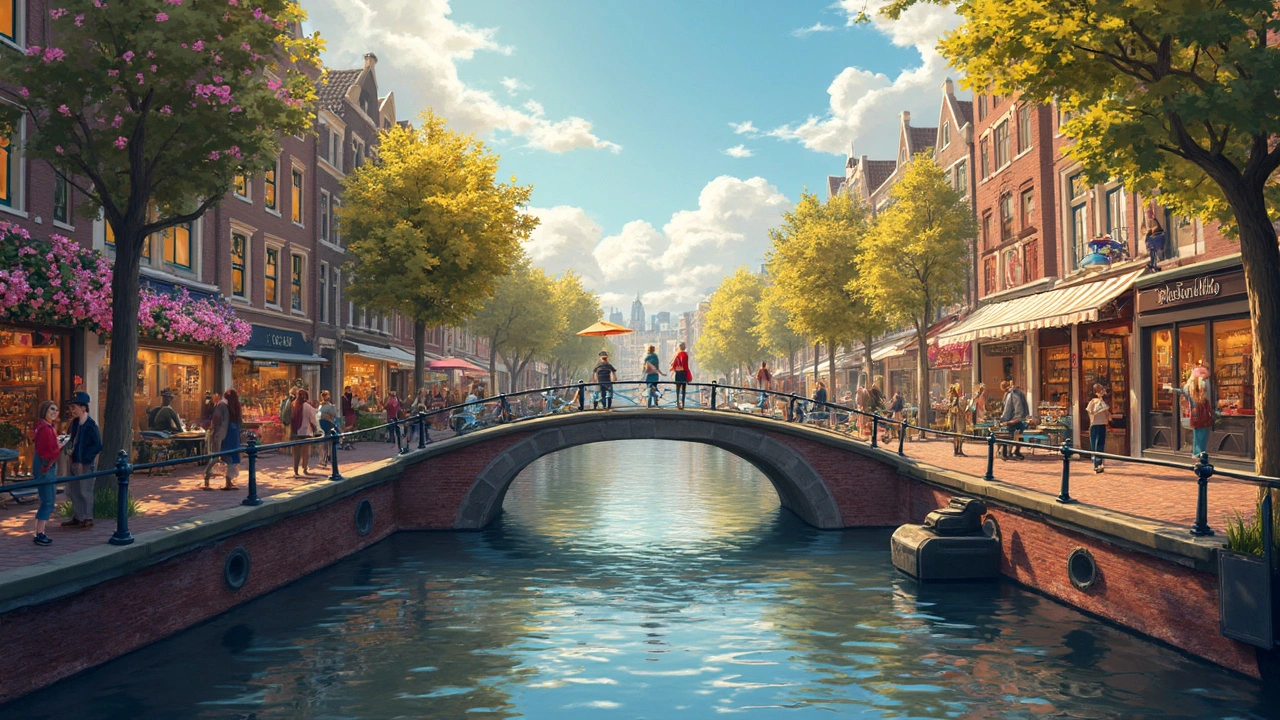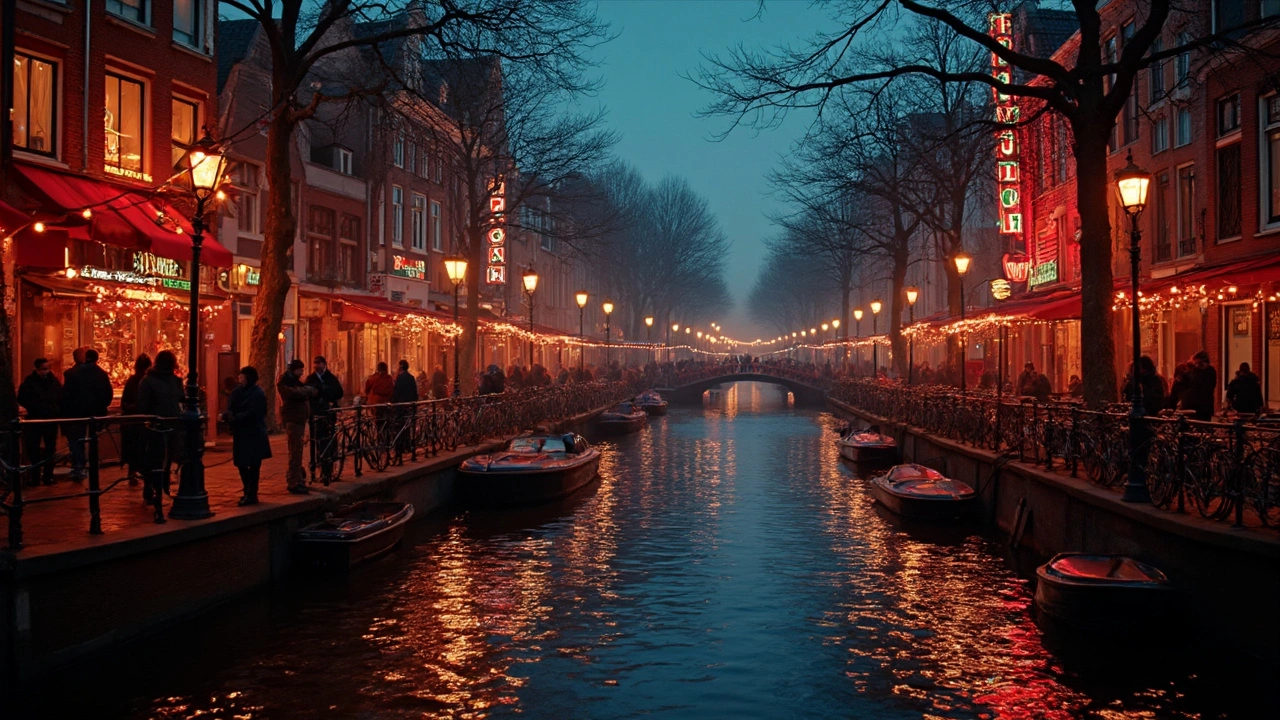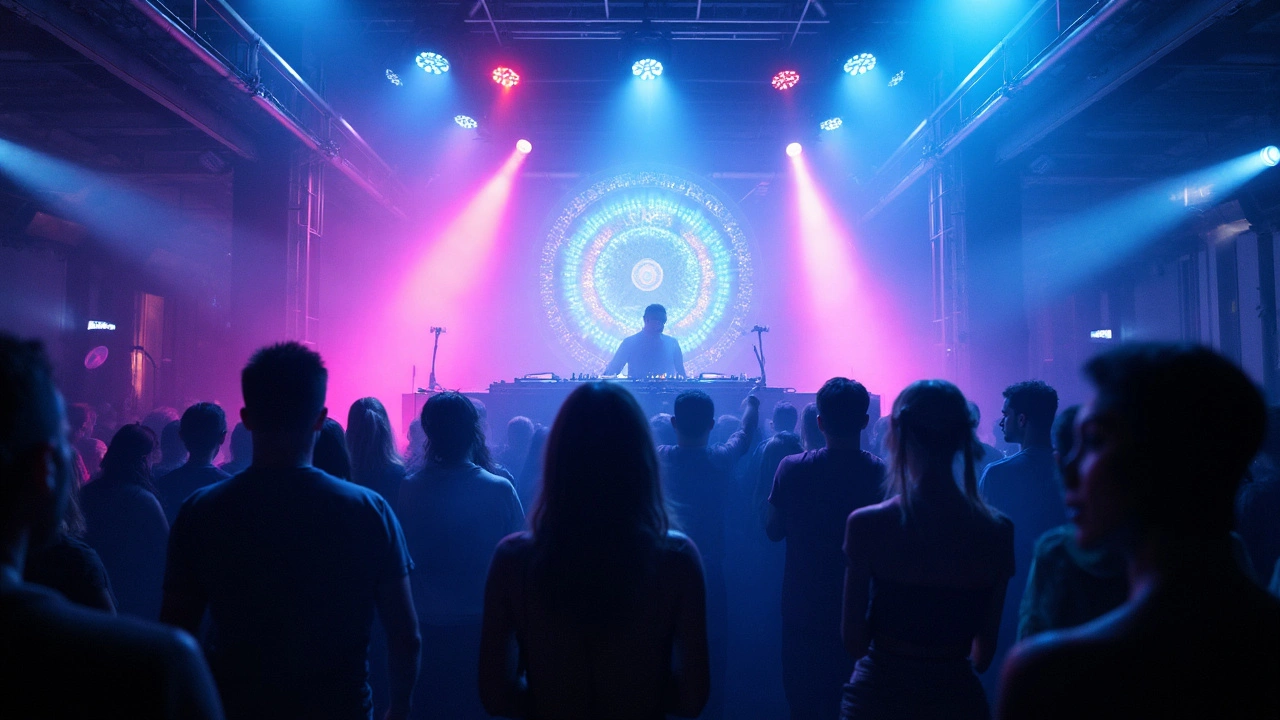
Ask anyone who’s serious about techno in Amsterdam—sound matters as much as the DJ. Amsterdam’s clubs aren’t just famous for all-night raves or parties on reclaimed docklands. Here, perfection in sound is a badge of honor. The city’s compact spaces, strict noise laws, and love for deep bass have shaped how venues invest in their gear.
There’s a reason people will queue up for Shelter, De School, or even lesser-known spots like Garage Noord. These places have poured serious money and effort into their systems, often working with Dutch and German audio companies to dial everything in just right. Amsterdam isn’t about the showiest setup; it’s about hearing every detail, feeling every kick drum, even when you’re tucked in the back corner or standing under a low ceiling. If you’re after pure sound, not just flashing lights, you’re in the right city.
- Why Amsterdam’s Scene is Different
- Top Clubs and Their Sound Systems
- Tech Behind the Beat: Amsterdam’s Gear Choices
- Getting the Perfect Audiophile Night Out
Why Amsterdam’s Scene is Different
Amsterdam isn’t just a stop on Europe’s clubbing map—it’s a city where the culture around Amsterdam techno clubs and sound systems is its own thing. Here, the focus goes deep. You won’t find blown-out speakers or tinny highs ruining the vibe; the city’s club owners know their crowds expect clarity and power from every corner of the dance floor.
One major factor is the way buildings shape the experience. A ton of clubs are inside old factories, WWII bunkers, or even beneath the IJ river, where thick concrete walls and oddly shaped rooms turn audio setups into a real challenge. Local sound engineers put in extra hours tuning everything so that the music hits right, no matter where you’re standing.
There’s also Amsterdam’s noise law. The Netherlands cares a lot about protecting its neighborhoods, so clubs have to keep sound inside and avoid leakages. Instead of turning things down and sacrificing quality, venues respond by investing heavily in soundproofing and speaker systems that deliver tight, punchy bass without rattling street windows. Sometimes, you feel the music more in your chest than your ears, and that’s not by accident.
"You can’t just blast the volume and hope for the best here. Amsterdam clubs build their identity on sound that’s powerful but controlled. People notice when it isn’t spot-on," says Mo Bakker, resident engineer at De School.
It’s not just about the gear, either. Dutch crowds have high standards—they expect the mixer to be analog, the vinyl to sound warm, and the system to keep up with the marathon sets common after ADE (Amsterdam Dance Event). Some clubs switch speaker configurations based on the night’s lineup. Others invite touring sound techs to tweak their setup for special events. It’s a different level of care, and it shows every time the bass drops in the city’s top techno rooms.
Top Clubs and Their Sound Systems
Amsterdam doesn’t mess around when it comes to sound. Some clubs here are basically temples for people who care about feeling every beat and nuance. Let’s get into which ones are really worth your time if you have audiophile-level standards.
Amsterdam techno clubs have set the bar worldwide, not just because of the DJs they book, but because of their all-out commitment to sound clarity and punch. The big names invest heavily in both their main rooms and side spaces—no corner-cutting on audio.
- De School: Housed in a former technical school, De School features a custom-designed Funktion-One sound system. They feed it directly from top-tier rotary mixers, so both purists and casual ravers leave talking about the warmth and depth. With soundproofing designed for 27-hour parties, there’s literally no bad spot on the dance floor.
- Shelter: Located under the IJ river, Shelter gives you bone-rattling low-end thanks to a system from L-Acoustics, a French company that delivers concert-level clarity night after night. The main room is designed for even coverage, meaning crisp highs at the bar and deep bass right by the subwoofers.
- Radion: Radion leans into a Martin Audio installation—a British brand that brings out punchy, precise tones even at lower volumes for intimate gatherings. This is the place if you want to actually hear what a vinyl set really sounds like.
- Garage Noord: It’s more underground but don’t let the size fool you. Their d&b audiotechnik rig is a favorite among DJs for accurate monitoring and just the right thump. Locals call it one of the best spots for hearing new producers push sound boundaries.
Here’s a look at the gear in a few top Amsterdam clubs:
| Club | Main Sound System Brand | Capacity | Notable Feature |
|---|---|---|---|
| De School | Funktion-One | 700 | Custom rotary mixer, room-wide clarity |
| Shelter | L-Acoustics | 1000 | Subterranean acoustics, even coverage |
| Radion | Martin Audio | 500 | All-night license, great for vinyl |
| Garage Noord | d&b audiotechnik | 300 | Experimental programming, indie feel |
Sound expert Jochem van der Laan, interviewed for DJ Mag Netherlands, nailed it:
"In Amsterdam, clubs are judged as much by their systems as their bookings. A great sound system keeps people coming back and gives DJs total freedom to dig deep in their crates."
If you’re an audiophile, these venues don’t just play the music—they show you new ways to experience it.
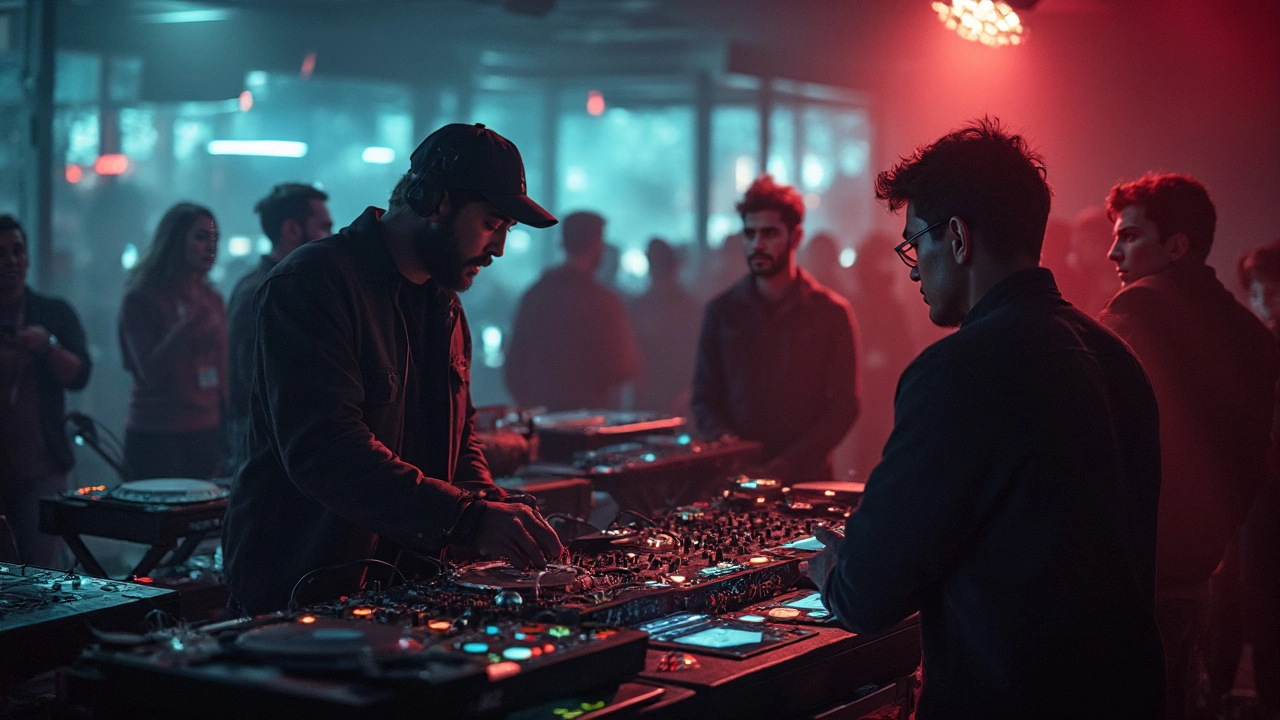
Tech Behind the Beat: Amsterdam’s Gear Choices
If you’ve ever wondered why the music in Amsterdam techno clubs sounds ridiculously crisp even when the room is packed, it comes down to gear—really good gear. Amsterdam club owners are borderline obsessed with getting the best sound for every room. You’ll spot a few names everywhere: Funktion-One, L-Acoustics, and Void Acoustics. These brands aren’t just dropped in; local sound engineers tailor each system for the quirks of every space.
For example, De School—a converted technical school—teamed up with a Dutch firm to tweak their Funktion-One rig. The goal? No dead zones, no muddy kick drums, just clean sound from the DJ booth to the dark corners. Shelter went with L-Acoustics, known for booming bass that doesn’t swamp the mids. They even run sound checks hours before opening, making sure the club’s low ceiling doesn’t kill those deep vibes.
What’s cool is how Dutch clubs tackle Amsterdam’s strict noise laws. Some use floating floors or isolated DJ booths to keep sound inside. Others, like RADION, invested in custom-built subwoofers that deliver plenty of punch but keep neighbors happy.
- Standout feature? The love for analog. Vinyl turntables—like Technics SL-1200s—are standard in many booths. It’s not nostalgia, it’s about delivering raw, uncompressed sound without digital glitches.
- Most clubs don’t cheap out on mixers either. Allen & Heath Xone and Pioneer DJM series are everywhere. Allen & Heath is the favorite for its warm, clubby tones, while Pioneer gives DJs those handy effects options.
| Club | Main Sound Brand | Unique Touch |
|---|---|---|
| Shelter | L-Acoustics | Sub-heavy tuned for low ceilings |
| De School | Funktion-One | Custom tweaks for every room |
| Garage Noord | Void Acoustics | Isolated DJ booth, clear highs |
| RADION | Funktion-One | Custom subwoofers, floating floor |
If you’re planning a visit or want to geek out, ask staff if you can catch a soundcheck. Some clubs even run occasional workshops with resident engineers—perfect if you want the inside scoop on how they keep Amsterdam’s night sound so good.
Getting the Perfect Audiophile Night Out
If you want to experience the best possible sound in Amsterdam techno clubs, a bit of planning goes a long way. It’s not just about picking any club with a big name. Focus on nights when the main room is open, because that’s usually where they crank up the full sound system. For example, at Shelter, the Friday or Saturday lineups often guarantee a full-on audio setup.
Pay attention to where you stand. The sweet spot is often dead center between the speakers and not too close to the booth. If you hang out at De School, check the area in front of the DJ booth or near the middle pillars—locals swear by these as the most balanced spots for bass and clarity.
If you’re sensitive to volume, or just want to protect your hearing after a few late nights, invest in a good pair of reusable earplugs. Brands like Alpine (which is Dutch, by the way) are all over local pharmacies and are a regular sight on the keychains of Amsterdam ravers. They don’t kill the vibe but will save your ears for more parties.
Before you go, keep an eye on the event listings. Sound crews in Amsterdam sometimes upgrade or tweak their rigs for special nights—ADE (Amsterdam Dance Event) is famous for this. If a club swears they’re bringing in Funktion-One or a custom L-Acoustics setup for a weekender, it’s not a marketing gimmick; you’ll notice the difference in how the music fills the space.
- Arrive early to get a sense of the room before it fills.
- Check sound from a few spots before picking your dance zone.
- Bring ear protection but keep it handy, not stuffed in your pocket.
- If you’re lost, ask the bartenders or regulars where the system sounds best—they usually know.
Little things like these can turn a regular club night into an all-out audiophile thrill. In Amsterdam, where music and engineering go hand in hand, every detail counts for the real heads chasing perfect sound.

